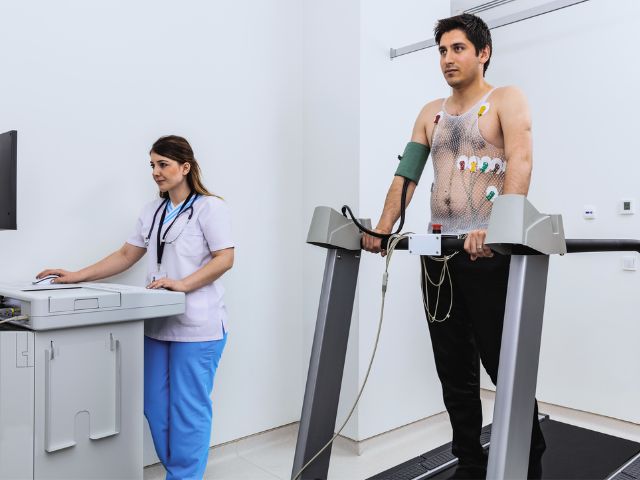Overview of the 4 Stages of Heart Failure
There are four stages of heart failure:
- Stage A (pre-heart failure) which shows you are at high risk of developing heart failure
- Stage B (pre-heart failure) means your left ventricle is compromised without presenting symptoms
- Stage C – patients have structural heart problems with symptoms of heart failure
- Stage D – patients have reduced ejection fraction and are in the final stage of heart failure
Left-sided heart failure presents when the left side of the heart cannot pump enough blood to meet the body’s demands. Left sided heart failure is more common than right-sided heart failure and caused by a combination of hypertension, coronary artery disease, and aortic stenosis.
Common symptoms can include the following:
- chronic cough
- shortness of breath
- fatigue
- weakness
- fluid retention of the ankles and feet
First-line treatment agents include loop diuretics joined with a low-salt diet, a β-blocker, and an ACE inhibitor. In patients with reduced ejection fraction (HFrEF), Dapagliflozin or Empagliflozin can reduce the risk of hospitalization and death.
For patients who have advanced heart failure refractory to medical/device therapy, heart transplantation may be a treatment option. A diagnosis of left-sided heart failure occurs through a comprehensive medical history, physical examination, and diagnostic tests, including an echocardiogram (ECG or EKG), cardiac stress test, and/or cardiac catheterization.
Right-sided heart failure (RHF) occurs when the right side of the heart cannot pump enough blood to meet the body’s demands, causing a buildup of fluid in the body’s tissues. Right-sided heart failure is less common and often caused by long-term high blood pressure in the arteries of the lung and right ventricle, a condition known as Cor pulmonale.
Symptoms of right-sided heart failure include the following:
- liver enlargement
- lower extremity swelling
- fatigue
- weakness
- shortness of breath
Stage A treatment can include diuretics to remove excess sodium and fluid and aldosterone antagonists (such as spironolactone) to lower the amount of blood that the heart must pump. Right-sided heart failure can be a challenging diagnosis because its symptoms can be non-specific and overlap with those of other conditions. Diagnostic tests can include a right heart catheterization to measure pressure and blood flow and pulmonary function tests (PFTs) to assess lung function factors contributing to RHF.
Congestive heart failure (CHF) is the single most common cause of mortality and morbidity in the developed world and occurs when both sides of the heart cannot pump enough blood to meet the body’s demands. The causes of CHF include hypertension, coronary artery disease, aortic valve disease, and genetic factors. Non-ischemic CHF exhibits evidence of familiarity (occurring in family) in 30–50% of cases.
Symptoms of CHF include the following:
- shortness of breath
- fatigue
- weakness at rest
- swelling
- weight gain from fluid in one’s ankles, lower legs, or abdomen
- coughing
First-line treatment for congestive heart failure can include lifestyle changes. Medical therapies include diuretics to correct fluid retention, aldosterone inhibitors to help with fluid retention, and ACE inhibitors to help improve heart function.
The diagnosis of CHF involves a detailed medical history, physical examination, and diagnostic tests, including markers of heart failure, such as B-type natriuretic peptide (BNP) and troponin levels.









